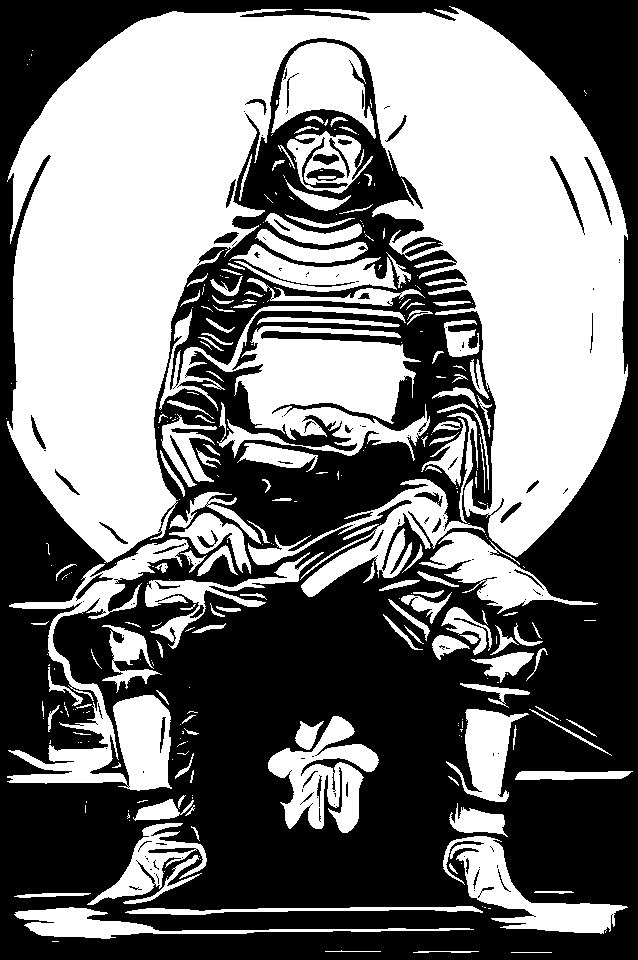
I was reading an article about the discovery of a new black hole that wasn’t respecting conventional physics. And I found some similarities with Sensei’s Budō. Like a star, Hatsumi Sensei has accumulated a lot of mass/knowledge over the years. That is why his Taijutsu is far beyond our understanding.
What is a black hole? “Black holes are volumes of space where gravity is extreme enough to prevent the escape of even the fastest moving particles. Not even light can break free, hence the name ‘black’ hole. (…) With so much mass in a confined volume, the collective force of gravity overcomes the rule that usually keeps the building blocks of atoms from occupying the same space. All this density creates a black hole.” (1)
Like a black hole, Sōke has accumulated so much, that the “building blocks” of Taijutsu become formless. And they merge into something different that we cannot comprehend.
About this newly discovered black hole, the article says that such an object should not exist. “One possibility, however, could be a fallback supernova, in which material ejected from the dying star falls immediately back into it, resulting in the direct formation of a black hole. (2) Isn’t it what we witness when training with Sensei at honbu? His no-power Taijutsu should not exist either. It goes against everything believed to be “martial arts.” We see what he does, but we don’t get how to reproduce it. I have been training with him for over thirty years now. If I can see what he is doing, there is no way I can naturally do it myself.
When you watch him, his movements don’t seem very hard or complicated. But no one, and I include the Japanese Dai Shihan, can do what he does. His Taijutsu, like a black hole, has surpassed the level of normal biomechanics. His movements are so polished that even if you can see them, you are unable to do them the way he does. There is no strength, no power, yet it is only strength and power!
These days Sensei only speaks about control. Full control of the opponent is only possible once you have surpassed the form. You don’t have to think about what to do, you are the movement. No intent, only natural response to the stimuli created by Uke.
After we collected every forms possible, I hope we can destroy them and reach his level to become a black hole too.
Hatsumi Sensei turned up 88 years old this December. “8” when horizontal means “infinite, so I guess that now he is like a “double infinite, no wonder we can’t copy what he does.”
______________________________________
1 https://www.sciencealert.com/an-impossible-black-hole-has-been-found-in-the-milky-way-galaxy
2 https://www.sciencealert.com/black-holes
Join the community www.koimartialart.com and watch 150 Gb of Bujinkan videos!

 In the Bujinkan, everything comes down to the quality of your footwork. As Hatsumi Sensei puts it, “move with your feet, the hands will follow.”
In the Bujinkan, everything comes down to the quality of your footwork. As Hatsumi Sensei puts it, “move with your feet, the hands will follow.” Today many practitioners are more interested in collecting Waza than understanding their purpose. Not so many try to find out the aim of a Waza.
Today many practitioners are more interested in collecting Waza than understanding their purpose. Not so many try to find out the aim of a Waza. Training is not limited to dōjō hours, homework is necessary. Once you have repeated many times the same moves, your Taijutsu gets better. To train your Kihon or your Waza has a name in Japanese: it is Tabi Tabi. (1)
Training is not limited to dōjō hours, homework is necessary. Once you have repeated many times the same moves, your Taijutsu gets better. To train your Kihon or your Waza has a name in Japanese: it is Tabi Tabi. (1) It is your fault if you cannot do the movements correctly. I found a quote by Sensei saying, “Humans have yet to dwell upon the consequences of their actions. Most people spend their time finding fault in the action of others rather than their own.” This is Sekininkan, the sense of responsibility. (1)
It is your fault if you cannot do the movements correctly. I found a quote by Sensei saying, “Humans have yet to dwell upon the consequences of their actions. Most people spend their time finding fault in the action of others rather than their own.” This is Sekininkan, the sense of responsibility. (1) My friend Philip Pihl wrote from Japan yesterday after class. Hatsumi Sensei expressed his mastery of Mutō Dori using the body, the sword, and the knife. Mutō Dori is still the major training point to learn and understand how to express it with our Taijutsu.
My friend Philip Pihl wrote from Japan yesterday after class. Hatsumi Sensei expressed his mastery of Mutō Dori using the body, the sword, and the knife. Mutō Dori is still the major training point to learn and understand how to express it with our Taijutsu.  When you go out for a trek in the mountains, you carry a backpack. Everything you might need during the long hours of walking is inside.
When you go out for a trek in the mountains, you carry a backpack. Everything you might need during the long hours of walking is inside.